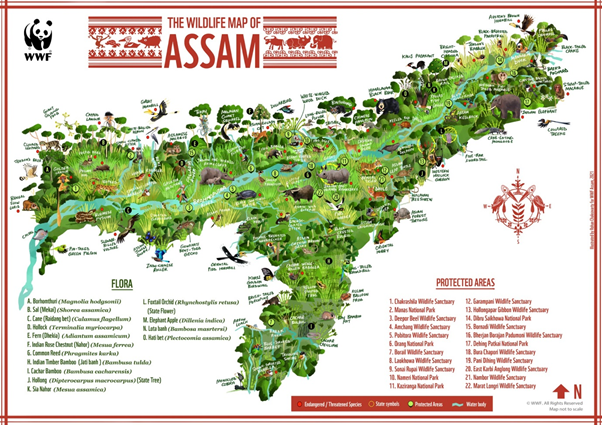

30th March 2022 (5 Topics)
Context
According to a recent survey, the population of one-horned rhinoceros at the Kaziranga National Park has registered an increase of 200, taking the total to 2,613.
- This was the 14th Rhino Population Census.
About
Key Findings:
- The survey revealed the presence of:
- 1,823 adult rhinos (above six years)
- 365 sub-adult (between three to six years)
- 279 juvenile (one to three years)
- calves 146 (0 to one year)
- Assam now has an estimated 2,845 rhinos, the highest in India, if the figures of the recent surveys in two other rhino habitats are factored in.
- The Orang National Park has 125 rhinos while the Pobitara Wildlife Sanctuary has 107 rhinos, a rise of 24 and five over the 2018 survey figures.
- The census at Manas National Park found 48 rhinos in April 2021.
|
Important facts about Rhino
Conservation Status
|
About Kaziranga National Park (KNP):
- It is located in the State of Assam and covers 42,996 Hectare (ha).
- It is the single largest undisturbed and representative area in the Brahmaputra Valley floodplain.
- Legal Status:
- It was declared as a National Park in 1974.
- It has been declared a tiger reserve since 2007. It has a total tiger reserve area of 1,030 sq km with a core area of 430 sq. km.
- International Status:
- It was declared a UNESCO World Heritage Site in 1985.
- It is recognized as an Important Bird Area by BirdLife International.
- Important Species Found:
- It is the home of the world's most one-horned rhinos.
- Pobitora Wildlife Sanctuary has the highest density of one-horned rhinos in the world and second highest number of Rhinos in Assam after Kaziranga National Park.
- Much of the focus of conservation efforts in Kaziranga are focused on the 'big four' species— Rhino, Elephant, Royal Bengal tiger and Asiatic water buffalo.
- Kaziranga is also home to 9 of the 14 species of primates found in the Indian subcontinent.




